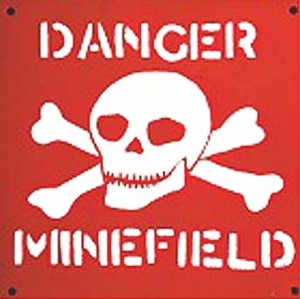It’s been a rare, snowy day here in Middle Georgia. To be more precise, it’s been a rare, icy, slippery day here in Middle GA. Couldn’t get to the printshop this morning and received no disappointment whatsoever when I contacted the team and asked if they thought we should call off work for today.
“There’s a half inch sheet of ice out my front door.” reported designer Todd.
“I’m at my girlfriend’s house and we’ve already built a fire.” from RH man Brian.
“I was all dressed and ready to go at 6:00 am when you texted that you weren’t coming.” from the first lady of sales, Sharon.
That one held me up. It brought to mind the lyrics of one of my favorite British Invasion songs, “I ain’t got you:”
I got a Maserati G.T.
With snakeskin upholstery.
I got a charge account at Goldblatt’s,
But I ain’t got you.
I got a closet full of clothes,
But no matter where it goes,
It keeps a ring in the nose,
But I ain’t got you.
I got a tavern and a liquor store.
I play the numbers, yeah, four forty-four.
I got a mojo, yeah, don’t you know,
I’m all dressed up with no place to go.
I got women to the right of me.
I got women to the left of me.
I got women all around me,
But I ain’t got you.
No, I ain’t got you.
For those of you who might be somewhat beyond the age where familiarity with the British Invasion is a given, the Yardbirds were the Rolling Stones that didn’t stay around. They had three great guitarists. Jimmy Page went on to lead Led Zeppelin. Jeff Beck produced one of the most amazing jazz fusion guitar albums of the 1970s (Wired). And then there was Clapton, the guitarist of the aforementioned number. Poor Richard doesn’t ascribe to the 1960’s graffiti asserting that “Clapton is God,” but it’s fair to assume that you have heard of him.
Ain’t got you . . . sounds really familiar. The printshop behind the red awnings on Poplar (name carefully concealed to protect the sensitive interests of the franchise) has spent a great deal of time and energy over the past couple of years adding the latest whizbang capabilities. We can help customers with email communications. We can send postcards with PURLS. We can help with social networking and Google Adwords. We can even develop simple CMS sites for small businesses. All of that along with wonderful capabilities in digital and conventional print and you’d think that we’d find an interested customer or two. But in reality, we’re kind of stuck . . . all dressed up with no place to go.
Poor Richard has batted about the “marketing services provider” concept for a couple of years. This theory maintains that in order to survive, printing companies must diversify into other realms of communication and become marketing consultants to their customers. I’m all for the first part of the assertion. Conventional print is certainly waning at the moment and merging conventional print capabilities with the low cost potential of the internet only makes sense. Marketing strategy is something completely different, though, especially in the altered reality of the Great Decession.
If you had asked me just a couple of years ago, I would have said that marketing strategy was the exclusive purview of the experts. In those days, marketing was at least partially predictable . . . traditional efforts (advertising, PR, etc.)would yield predictable results. Now I’d say it’s anyone’s guess. Proven tactics may fail totally and a low cost video on YouTube can go viral. It’s unpredictable, but there’s plenty of stuff to try.
Our Gralpharaphics shop has experienced good business relationships with a couple of excellent agencies, and in balance, these folks have done a very good job for their customers. One of our key agency accounts closed last year after trying very hard to bring their customers in line with the new realities of marketing. They experienced difficulties because the new realities are damnably hard to define and their customers still expected the predictability of the old paradigm.
So where does that leave us? We can implement some pretty cool stuff, if we can find the customers willing to take the risk. These folks are pretty hard to find in icebound Middle Georgia, though, so Poor Richard is humming the old British Invasion song
Couldn’t find a good Yardbirds video, but the audio tells the story . . .
Got to end on an optimistic note, though. Here’s Janis . . .



 Posted by poor richard
Posted by poor richard 



 Poor Richard thought it was only printers that had it bad. It had been a while since I had visited our local BMEU (Bulk Mail Entry Unit). The printshop next to Grant’s Lounge (name withheld to protect the sensibilities of the franchise) had a mailing to go out Friday, and no one else was available, so I loaded up the Suburban and headed for the post office.
Poor Richard thought it was only printers that had it bad. It had been a while since I had visited our local BMEU (Bulk Mail Entry Unit). The printshop next to Grant’s Lounge (name withheld to protect the sensibilities of the franchise) had a mailing to go out Friday, and no one else was available, so I loaded up the Suburban and headed for the post office.



